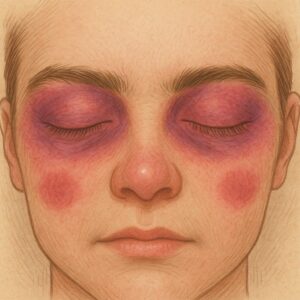Dermatomyositis is a rare autoimmune disease that causes muscle weakness and a distinctive skin rash. The body’s immune system mistakenly attacks healthy muscle and skin tissue, leading to inflammation, pain, and sometimes long-term damage.
It affects both adults and children and can range from mild to severe.

